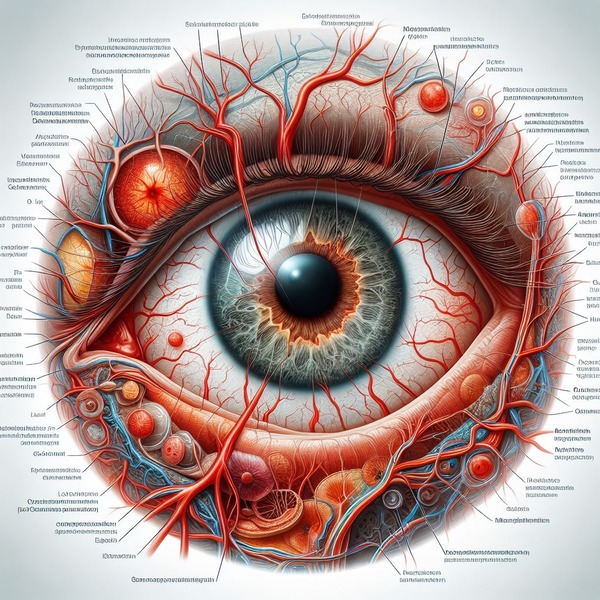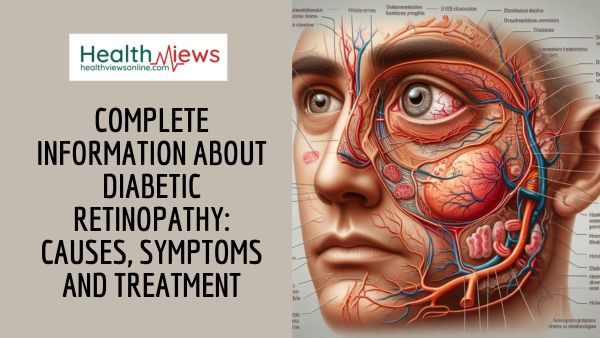What is Diabetic Retinopathy?
Diabetes retinopathy is a type of eye disease caused by diabetes. Damage to the blood vessels of the light-sensitive tissue at the rear of the eye (retina) causes it. Diabetic retinopathy may cause no symptoms or very modest vision impairments at first. It does, however, have the potential to cause blindness.
Anyone with type 1 or type 2 diabetes is at risk of developing the disease. The longer you have diabetes and the less well-regulated your blood sugar is, the more likely it is that you will get this eye issue.
What is the retina?
The retina is a tissue in the back of the eye that, like film in a camera, conveys signals to the brain. Light rays are converted by the retina into electrical impulses that connect with your brain. These impulses are what enable you to see (vision). Source
Also, Read Complete Information about Amblyopia (Lazy Eye): Causes, Symptoms and Treatment
What causes diabetes-related retinopathy?
Diabetes-related retinopathy, or damage to the retinal vessels in the eye, is a cause of cataracts, glaucoma, and glaucoma. If not treated, these damaged vessels can cause inadequate blood flow (ischemia), inflammation, and eventually legal blindness.
Symptoms
In the early stages of diabetic retinopathy, you may not notice any symptoms. As your health deteriorates, you can observe:
- Spots or dark strings floating in your eyesight (floaters)
- Blurred vision
- Fluctuating vision
- Dark or empty areas in your vision
- Vision loss

Who is at risk for diabetes-related retinopathy?
Diabetes-related retinopathy can affect everyone who has diabetes, including those who have:
- Gestational diabetes
- Type 1 diabetes.
- Type 2 diabetes.
Diabetes-related retinopathy risk factors for people with diabetes include:
- Pregnancy.
- Hypertension.
- Uncontrolled blood sugar.
- Hyperlipidemia.
- The duration you’ve had diabetes-related retinopathy.
Diabetic Retinopathy Diagnosis
Drops will be inserted into your eye to dilate (enlarge) your pupil. This allows your ophthalmologist to see the inside of your eye through a specific lens.
To examine the retina closely, your doctor may use optical coherence tomography (OCT). The retina is scanned by a machine, which produces detailed images of its thickness. This assists your doctor in locating and measuring edema in your macula.
Fluorescein angiography, also known as OCT angiography, allows your doctor to view what is going on with the blood vessels in your retina.
Treatment
Your ophthalmologist’s evaluation of your eyes will determine how you are treated. Treatment includes:
- Medical control
Vision loss can be prevented by managing your blood pressure and blood sugar levels. Pay close attention to the diet that your dietitian has advised. Consume the medication that your diabetic specialist prescribed. Good glucose management may even partially restore your vision.
- Medicine
Anti-VEGF drugs are one type of treatment. Avastin, Eylea, and Lucentis are examples. Anti-VEGF therapy reduces macula edema, reducing vision loss and maybe enhancing vision. Another treatment option for macular swelling is steroid medication. This is also delivered as eye injections. Your doctor will advise you on the number of drug injections you will require over time.
Diet
Here are some diet suggestions to assist you in managing your diabetes and lowering your risk of diabetes-related eye problems.
- Food
- Omega 3 fatty acids
- Fruits
- Vegetables including kale, broccoli, lettuce, parsley, peas, spinach, turnip greens, corn, carrots, pumpkin, red and orange peppers Source
Prevention
Diabetic retinopathy cannot always be avoided. Regular eye checkups, proper blood sugar and blood pressure control, and early intervention for vision disorders, on the other hand, can help prevent serious vision loss.
If you have diabetes, you can reduce your chance of diabetic retinopathy by doing the following:
- Control your diabetes.
- Keep an eye on your blood sugar levels.
- Inquire with your doctor about the glycosylated hemoglobin test.
- Maintain a healthy blood pressure and cholesterol level.
- If you smoke or use other types of tobacco, consult your doctor for help in quitting.
- Keep an eye out for changes in your vision.
Also, Read Complete Guide on Age-Related Macular Degeneration: Causes, Symptoms, and Treatment





